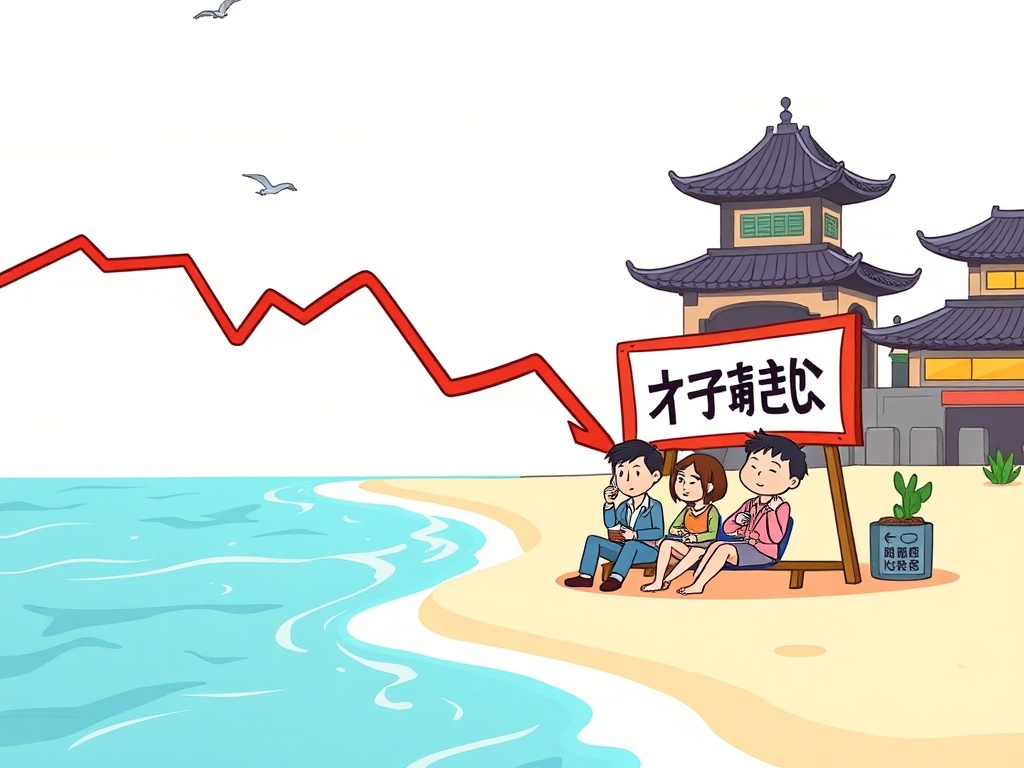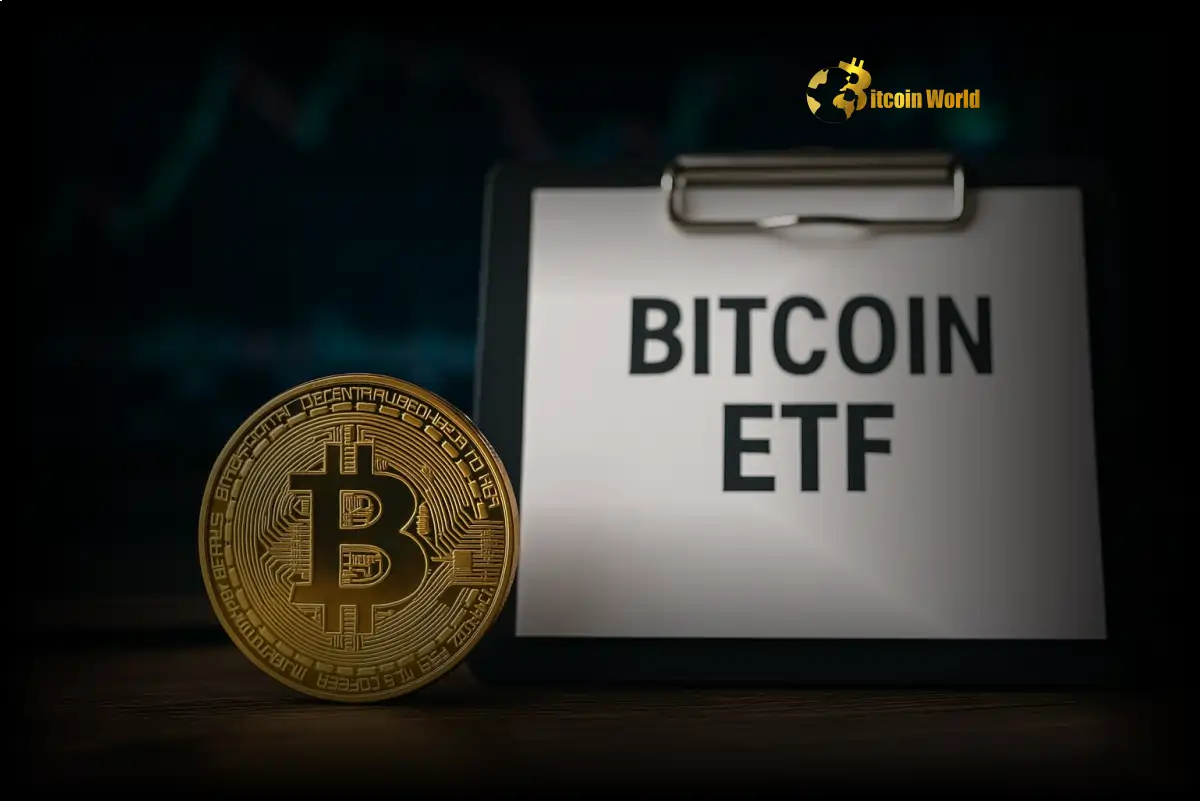BitcoinWorld

South Korea Crypto Volume Plunges: Unveiling the Summer Slowdown Impact
The digital asset market is a dynamic arena, often influenced by global trends and seasonal shifts. Recently, the spotlight has been on Asia, particularly South Korea, a significant hub for cryptocurrency trading. A notable downturn has caught the attention of market observers: a significant plunge in South Korea crypto volume. This development prompts a closer look at the underlying factors and potential implications for traders and investors alike. Understanding these shifts is crucial for navigating the ever-evolving crypto landscape.
What Triggered the Decline in South Korea Crypto Volume?
South Korea’s top cryptocurrency exchanges have recently experienced a considerable cooling in trading activity. Daily volume across major platforms like Upbit, Bithumb, Coinone, and Korbit collectively reached 3.54 trillion won (approximately $2.55 billion). This figure represents a 20.3% decrease from the previous day’s totals, amounting to a drop of 899 billion won ($647 million). Data from CoinMarketCap, as reported by local outlet Topstarnews, highlights this substantial reduction.
The primary reason cited for this slump is the onset of the summer vacation season. Historically, summer months often see a general slowdown in financial markets, including crypto. Traders and investors tend to step back from active engagement, prioritizing leisure and travel. This reduction in participation naturally leads to decreased liquidity and overall trading volume.
How Did the Market Share Shift Amidst Lower South Korea Crypto Volume?
Even with the overall decline, the competitive landscape among South Korean exchanges remains largely consistent. Upbit maintained its dominant position, accounting for a significant portion of the reduced trading activity. This platform continues to be the preferred choice for a large segment of South Korean crypto traders.
Here’s a breakdown of the daily trading volume and market share among the top four exchanges:
| Exchange | Volume (KRW) | Volume (USD) | Market Share |
|---|---|---|---|
| Upbit | 2.33 trillion | 1.68 billion | 65.8% |
| Bithumb | 1.09 trillion | 785 million | 30.8% |
| Coinone | 98.3 billion | 70.8 million | 2.8% |
| Korbit | 21.3 billion | 15.3 million | 0.6% |
Upbit’s significant lead, holding nearly two-thirds of the market, underscores its position as the primary gateway for crypto trading in South Korea. Bithumb remains a strong second, capturing nearly a third of the market. Coinone and Korbit, while important players, operate on a much smaller scale compared to the two giants. This market concentration suggests that any broad shift in South Korea crypto volume heavily impacts these leading platforms.
Is the Summer Slowdown a Recurring Theme for South Korea Crypto Volume?
Seasonal patterns are not uncommon in financial markets. The summer slowdown, often referred to as the ‘summer doldrums,’ is a recognized phenomenon where trading activity typically dips due to holiday periods. This applies not only to traditional stock markets but also increasingly to the crypto space.
Several factors contribute to this summer lull beyond just vacations:
- Reduced Retail Participation: Individual traders, who constitute a significant portion of the crypto market, often take breaks during summer, leading to fewer transactions.
- Lower Institutional Engagement: Even institutional players might reduce their activity, with key personnel on leave or firms adopting a more cautious approach during periods of lower liquidity.
- Decreased Volatility: With fewer participants, market volatility can sometimes decrease, offering fewer immediate trading opportunities and further discouraging active trading.
- Macroeconomic Calm: Summers can sometimes be periods of relative calm in broader macroeconomic news, leading to less urgent market reactions.
While a 20.3% drop is notable, it is essential to contextualize it within these seasonal patterns. It is a challenge that every market faces, and South Korea crypto volume is no exception.
What are the Broader Implications of Reduced South Korea Crypto Volume?
A sustained drop in trading volume can have several implications for the market and its participants:
- Liquidity Concerns: Lower volume often translates to reduced liquidity. This means it can be harder to execute large trades without impacting the asset’s price, potentially leading to wider bid-ask spreads.
- Price Stability: While lower volume might suggest less volatility, it can also make the market more susceptible to significant price movements from relatively smaller trades, as there are fewer orders to absorb large buys or sells.
- Revenue for Exchanges: Crypto exchanges primarily generate revenue from trading fees. A significant drop in volume directly impacts their financial performance.
- Market Sentiment: Persistent low volume can sometimes signal a lack of interest or conviction in the market, potentially dampening overall sentiment among new and existing investors.
For traders, this period can present both challenges and opportunities. Day traders might find fewer profitable setups due to reduced movement, while long-term investors might see it as an opportunity to accumulate assets at potentially stable or lower prices.
How Might South Korea Crypto Volume Recover Post-Summer?
As the summer vacation season concludes, there is an expectation for trading activity to pick up. Several factors could contribute to a rebound in South Korea crypto volume:
- Return of Retail Traders: With holidays ending, individual traders are likely to re-engage with the market, bringing back much-needed liquidity.
- Increased Institutional Activity: Institutions often ramp up their operations in the autumn, leading to more significant capital flows into the market.
- New Market Catalysts: Fresh news, regulatory developments, major blockchain upgrades (like Ethereum’s continued evolution), or significant macroeconomic shifts could reignite market interest and drive volume.
- Product Innovation: Exchanges might introduce new features, trading pairs, or services designed to attract more users and boost activity.
The South Korean crypto market is known for its unique characteristics, including the ‘Kimchi Premium,’ where crypto assets sometimes trade at higher prices in South Korea compared to global markets. This premium, when it appears, can also be a strong incentive for traders. The resilience and adaptability of the South Korean crypto community suggest that while temporary dips occur, the underlying interest in digital assets remains strong.
The recent dip in South Korea crypto volume serves as a reminder of the market’s cyclical nature and its sensitivity to seasonal influences. While a 20.3% drop is notable, it appears to be largely attributed to the expected summer slowdown rather than a fundamental shift in market health. The dominance of Upbit and Bithumb continues, highlighting the centralized nature of trading activity in the region. As the vacation season winds down, market participants will be keenly watching for signs of recovery and renewed vigor, anticipating a return to more robust trading volumes. Understanding these patterns is key to navigating the crypto market effectively.
Frequently Asked Questions (FAQs)
Q1: What is the primary reason for the recent drop in South Korea crypto volume?
A1: The primary reason cited for the recent drop in South Korea crypto volume is the summer vacation season, which typically leads to reduced trading activity as individuals and institutions take breaks.
Q2: Which exchange holds the largest market share in South Korea’s crypto market?
A2: Upbit holds the largest market share in South Korea’s crypto market, accounting for approximately 65.8% of the total trading volume.
Q3: Is a summer slowdown common in crypto markets?
A3: Yes, a summer slowdown, often called ‘summer doldrums,’ is a common phenomenon in financial markets, including crypto, where trading activity typically dips due to holiday periods and reduced participation.
Q4: How does reduced trading volume impact crypto exchanges?
A4: Reduced trading volume directly impacts crypto exchanges by lowering their revenue, which is primarily generated from trading fees. It can also lead to reduced liquidity and potentially wider bid-ask spreads.
Q5: What factors could lead to a recovery in South Korea crypto volume?
A5: A recovery in South Korea crypto volume could be driven by the return of retail and institutional traders post-summer, new market catalysts like regulatory developments or blockchain upgrades, and product innovation from exchanges.
Q6: What is the ‘Kimchi Premium’ and how does it relate to the South Korean crypto market?
A6: The ‘Kimchi Premium’ refers to the phenomenon where cryptocurrency assets trade at higher prices in South Korea compared to global markets. This premium, when present, can act as a strong incentive for traders and is a unique characteristic of the South Korean crypto market.
If you found this analysis insightful, consider sharing it with your network! Help us spread awareness about the dynamics of the global crypto market by sharing this article on your social media platforms.
To learn more about the latest crypto market trends, explore our article on key developments shaping the crypto market outlook.
This post South Korea Crypto Volume Plunges: Unveiling the Summer Slowdown Impact first appeared on BitcoinWorld and is written by Editorial Team





